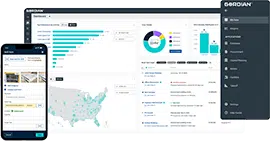Facility Life Cycle Costs with RSMeans Part 2
Adrian Charest, PE, LEED AP BD+C, senior engineer at RSMeans, is the senior editor of the RSMeans Green Building Cost Data book. He has managed and completed consulting projects for RSMeans in a range of topics valued from $10K–$20M. He has instructed Mechanical and Electrical as well as Facility Maintenance and Repair estimating seminars for RSMeans throughout the United States in both public and private settings. His experience includes engineering, hands-on construction, professional estimating, and project management on small to large projects in a variety of trades. In addition, Mr. Charest has owned and operated a general contracting company where he managed, subcontracted, and performed trade work and brought challenging projects to completion. Mr. Charest holds Bachelor and Master of Science degrees from the University of New Hampshire and the University of Massachusetts, respectively. He is a licensed professional engineer and construction supervisor, as well as a LEED accredited professional.
Read Part 1 of this blog post here.
Comparison Of Buildings
To illustrate a comparison of buildings, the publicly available dataset was again used to develop 5 life cycle cost models that were created in a similar manner as previously described. These life cycle cost models also represent the actual facility’s size, type, age, as well as other parameters. Exporting the life cycle cost analyses and graphing them together provides a visual comparison of how aging facilities require more maintenance and repair costs versus newer ones. This comparison can be seen in Figure 3, which displays how newer facilities, or the one toward the front of the chart, have a lower running cost while older facilities, or the one toward the rear of the chart, have higher.
Why is comparing multiple life cycle costs useful? The exported data enables an easy, visual understanding of large future costs across multiple facilities. This provides for planning of costs beyond a single facility and can allow for multi-facility cost analyses, which aids in better maintenance coordination. Entities that own or manage multiple facilities of various ages could benefit from this level of detail in their overall capital asset portfolio.
Geolocation of Life Cycle Costs
To illustrate the geolocation of life cycle costs, the publically available dataset was then used to model 39 facilities in a similar manner as previously described. These life cycle cost models were all based on actual facilities and represent their size, type, age, as well as other parameters. Exporting the life cycle cost analyses into a geographic information system and mapping the results provides a visual depiction of where costs occurred and what type for particular years or over time. A depiction of 2019 can be seen in Figure 4, where the facility with the highest cost is evident in the Springfield, Massachusetts area. This figure also shows the respective preventative, maintenance and repair, as well as the replacement costs for each location, which is scaled accordingly.
What are the advantages of mapping a facility or multiple facilities life cycle costs? While construction is the first and shortest phase in a facility’s life, the sustainment activities continue throughout the majority of its lifespan and bring a very different set of challenges. Geolocation can relate these costs with external information, often from a variety of sources. Examples include census data and the transportation network, relating facility costs with people and movement, respectively.
The U.S. census data provides a variety of information related to the people that are living in an area. The kind of work they do, their ages, and many other statistics are all publically available. With this information, one can foresee if the types of trade’s people are locally available for a major renovation. For instance, a slate roof requires an individual with a specialized skillset, not just for the installation but also for the maintenance and repair work, and facilities that do not have someone nearby may be required to pay additional transportation costs.
The transportation network can provide insight into the types of roadway or public system projects that are being planned for and the impact they will have on accessibility. Mapping major projects that are slated for the future against a facility’s repairs can prove beneficial when resource planning. For instance, a major roadway construction project that is set to occur during the same time as a facility’s major renovation could cause delays in its completion. This could be especially difficult for a mission critical facility such as a hospital.
In terms of multiple facility planning, understanding where as well as when construction costs are going to occur can assist in the coordination of repairs. For example, recognizing that a cluster of facilities, which are geographically near each other, have similar maintenance and repair costs slated to occur can be incorporated into contractor negotiations. With this information, a facility manager can proactively establish contracts across multiple facilities versus treating each individually.
Conclusion
Information is powerful, and more information is more powerful. By itself, RSMeans Life Cycle Cost models are a great tool for analyze an individual facility’s costs beyond initial construction. However, when used as a tool to compare multiple facilities or when including information outside of costing data, the applications become very powerful and resourceful.





